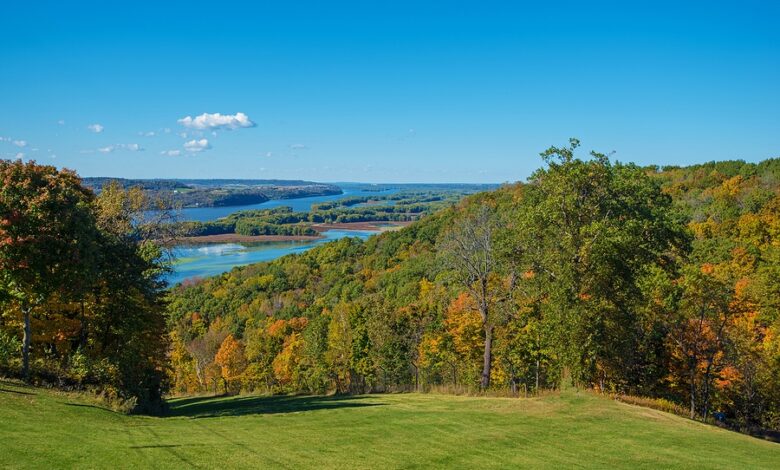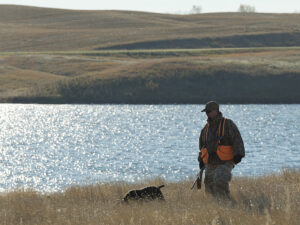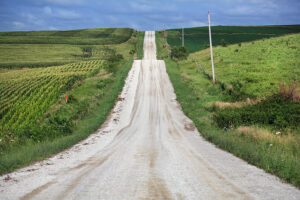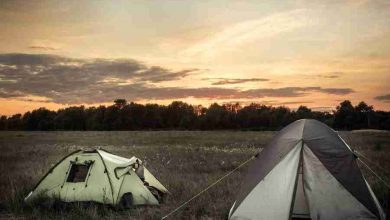
Before farmland covered nearly 90-percent of Iowa, the vast majority of the state was prairie. Only a small fraction of that natural habitat remains, making Iowa one of the most biologically altered states in the nation. Some Iowans are working to resurrect the state’s natural habitats and the wildlife that comes with it. Kelly Madigan, who lives in Monona County along the Loess Hills, says Iowa’s natural areas have become very fragmented.
 Only a tiny sliver of Iowa prairie land, around one-tenth of 1%, remains untouched by agriculture and the development that surrounds it. Graham McGaffin, with the Iowa Nature Conservancy, points to the birds and the bison that populate the Loess Hills. McGaffin says it’s one of the state’s most biodiverse areas because it holds 75% of Iowa’s grassland prairies.
Only a tiny sliver of Iowa prairie land, around one-tenth of 1%, remains untouched by agriculture and the development that surrounds it. Graham McGaffin, with the Iowa Nature Conservancy, points to the birds and the bison that populate the Loess Hills. McGaffin says it’s one of the state’s most biodiverse areas because it holds 75% of Iowa’s grassland prairies.
Since 1963, the organization has been collaborating with landowners to bring back wildlife and he says they do so by connecting the fragmented natural spaces. The lack of protected natural land isn’t sustainable for Iowa’s wildlife, according to biology professor David Hoferer at Briar Cliff University in Sioux City. Hoferer says the destruction of the ecosystem is part of what has led to 47 animals and 64 plants being listed as endangered within the state.
 Hoferer says it will take thousands of individual landowners stepping up to implement conservation practices to reverse the process. He says the state should focus on giving farmers incentives to reintroduce natural habitats on steep or flood-prone lands. Farmer Lee Tesdell planted strips of prairie across his 76 acres in Story County a few years ago and now has patches of purple and yellow wild vegetation interwoven in his soybean fields. Tesdell says the biodiversity on his farm is blooming.
Hoferer says it will take thousands of individual landowners stepping up to implement conservation practices to reverse the process. He says the state should focus on giving farmers incentives to reintroduce natural habitats on steep or flood-prone lands. Farmer Lee Tesdell planted strips of prairie across his 76 acres in Story County a few years ago and now has patches of purple and yellow wild vegetation interwoven in his soybean fields. Tesdell says the biodiversity on his farm is blooming.
Tesdell says the strips can reduce sediment movement by 95%, significantly reducing water pollution.




